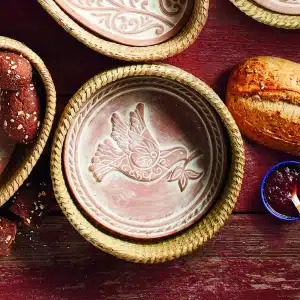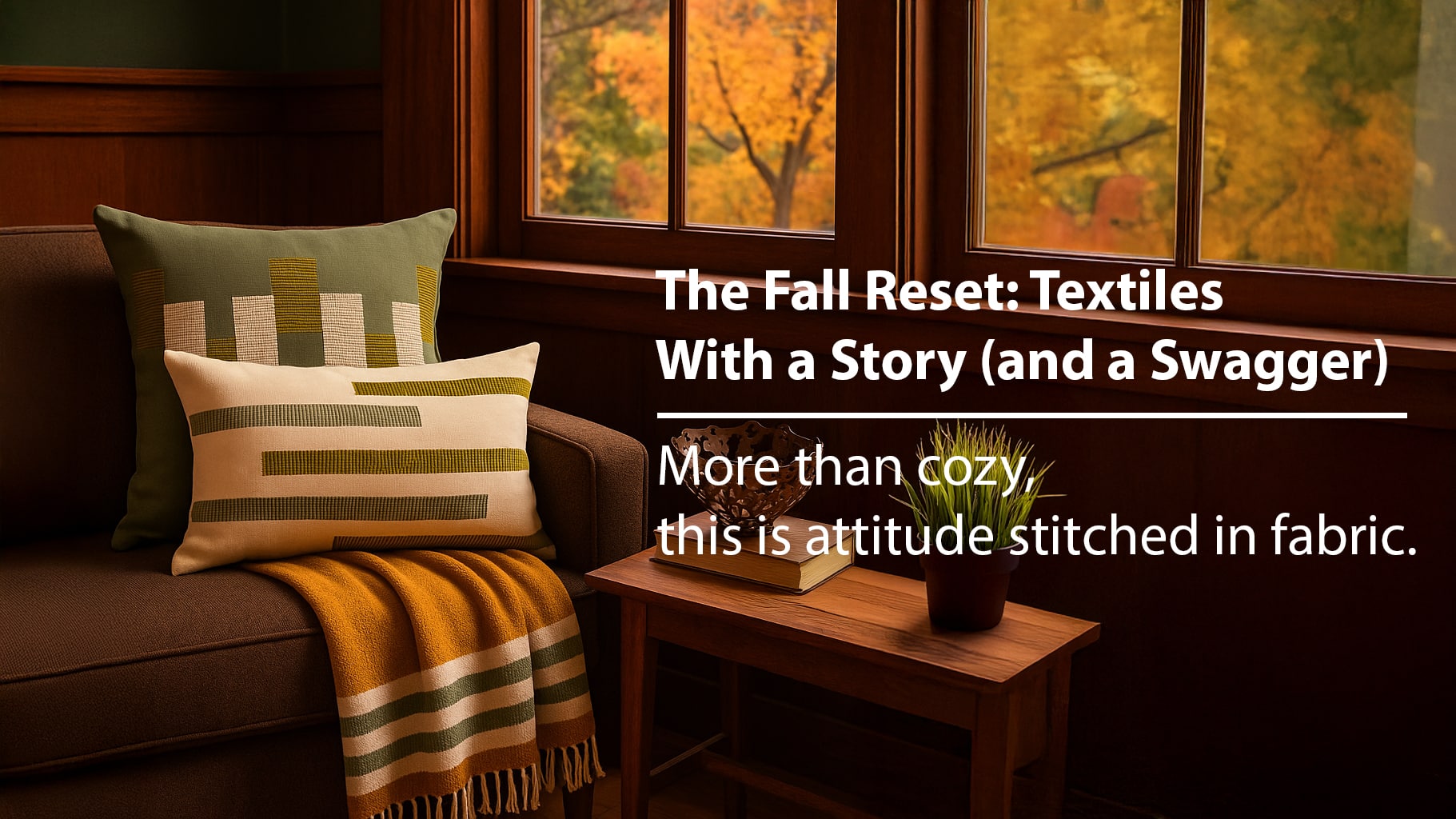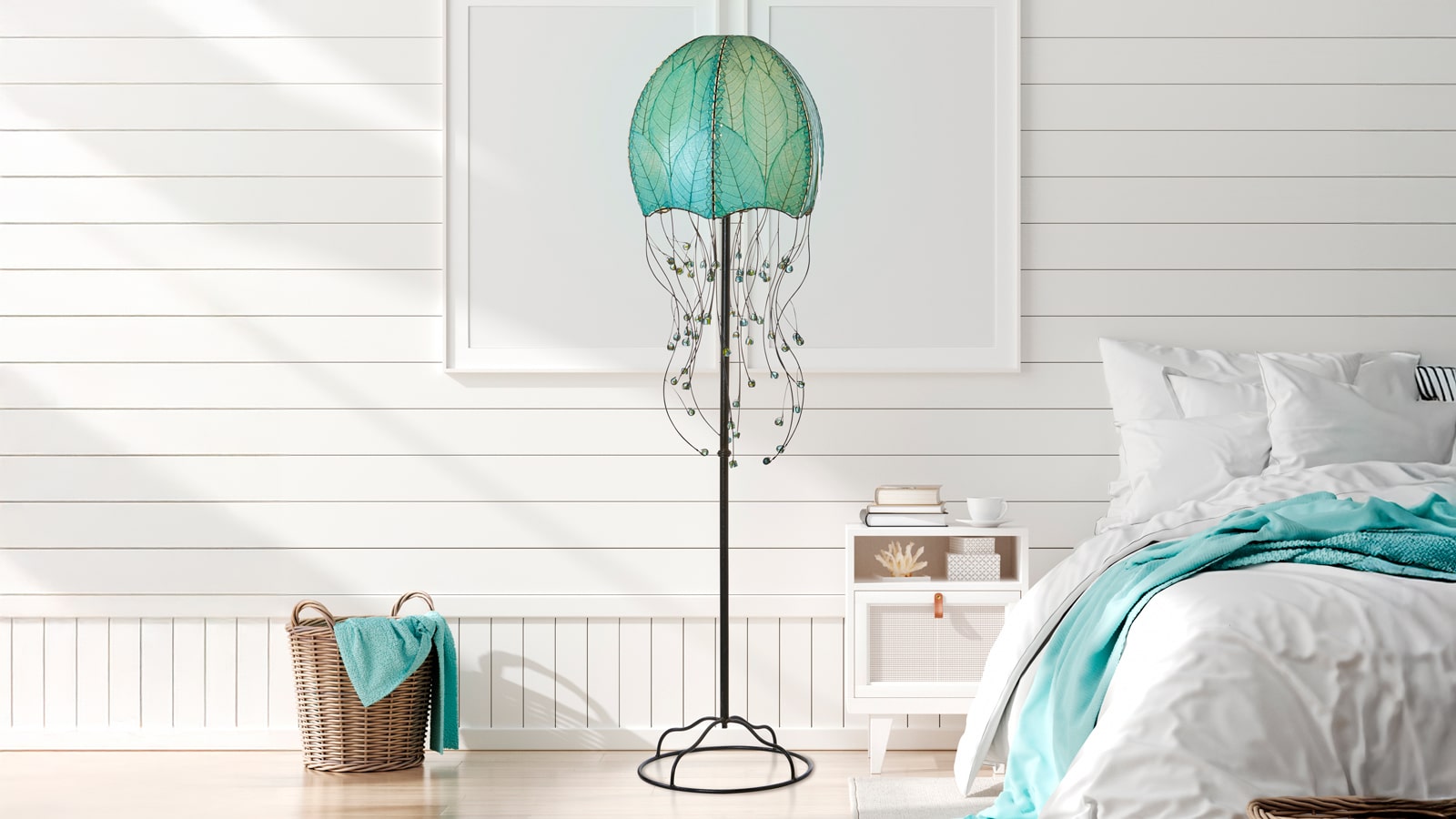Terracotta Bread Warmer | Clay & Bread: A Love Story
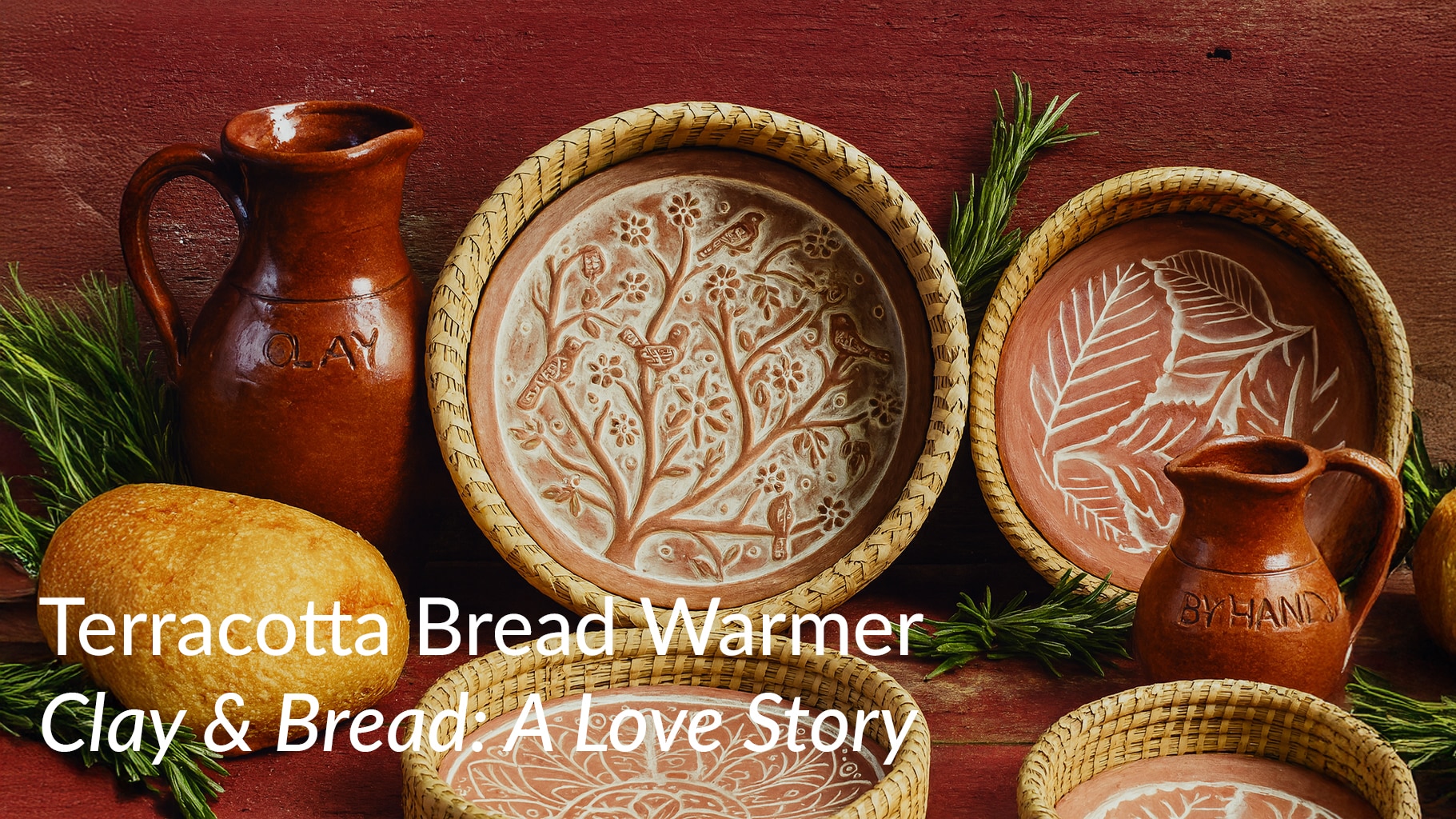
October 14, 2025
By: Christopher Godfrey
The terracotta bread warmer has a long story. Wherever bread has risen, clay has been close by. For thousands of years and across continents, terracotta has been the quiet partner in the world’s favorite food. From the charred loaves of Pompeii to the tortillas of Mesoamerica, from pitas in clay ovens to rotis on earthen stoves, clay carries heat and keeps bread warm long enough to share.
At Eangee Home Design, our bread warmers carry that tradition forward. Each one is handcrafted in Bangladesh. Consequently, a clay stone paired with a woven basket becomes a timeless tool for the modern table. In the end, the ritual of warm bread feels simple, reliable, and memorable.
Why a terracotta bread warmer works
Clay has a gift. It soaks up heat and then releases it slowly. As a result, bread stays tender inside and pleasantly crisp outside. Metal pans flare hot and cool fast. By contrast, clay holds a gentle, even temperature. Therefore, a terracotta bread warmer fits the pace of a meal that is meant to be shared.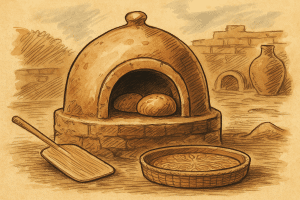
To begin, preheat the stone in the oven and then set it in the basket. If you prefer a softer crust, line the basket with a cloth. Otherwise, leave it uncovered for extra crispness. Throughout the meal, the stone releases warmth gradually so rolls and loaves stay inviting.
Clay across cultures
Across the world, you will see the same story told with local accents.
Pompeii, Italy, saw bakers pull rounds of Panis Quadratus from clay and brick ovens before Mount Vesuvius buried the city in ash. For a modern reconstruction, the British Museum explains the process here.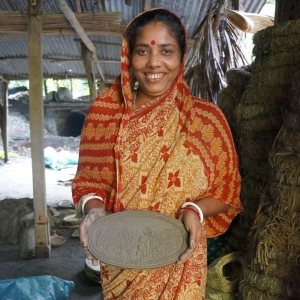
Meanwhile, tortillas in Mesoamerica have long been cooked on clay comales. These flat griddles anchor daily cooking. For example, the Smithsonian preserves a historic comal and explains its role here.
Across the Middle East and North Africa, pitas bake in clay ovens such as taboons and tandoors. Cooks press dough against the hot clay walls and watch it balloon in seconds. In fact, UNESCO recognizes traditional flatbread making as shared cultural heritage.
In South Asia, naan and roti are cooked on clay tawas and inside tandoors. In Bangladesh, earthen stoves called chulhas still anchor daily meals. For context, Britannica offers a concise overview of the tandoor here.
Taken together, different breads and languages appear in these kitchens. Even so, the same truth holds. Clay has always been bread’s quiet partner.
Bangladesh: a living tradition with clay bread baskets
Terracotta has shaped daily life in Bengal for more than two millennia. Archaeological sites reveal pottery and fired clay objects from ancient kingdoms. Clay was not only used for art. More importantly, it formed the foundation of daily cooking.
Today, that tradition continues. Each clay bread basket with warming stone is made start to finish in Bangladesh. The stone is shaped and fired by hand so it can hold warmth. The basket is woven from natural fibers that insulate the stone and make carrying comfortable. In combination, the materials feel modern while they carry centuries of know-how.
For further reading, see Banglapedia’s overview of terracotta art and terracotta sculpture.
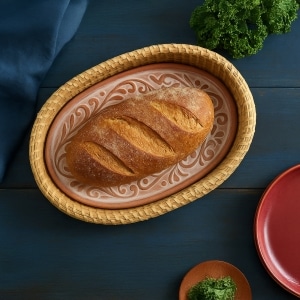 How to use a clay bread basket with warming stone
How to use a clay bread basket with warming stone
First, preheat the oven to 350–400°F.
Next, warm the terracotta stone for 10–15 minutes.
Then, set the stone in its basket.
For softer crusts, line with a cloth. For extra crispness, leave it uncovered.
Finally, add bread, rolls, or tortillas and cover lightly.
During the meal, lift the cloth to serve, then replace it. Because the clay holds steady warmth, bread stays ready no matter how long the conversation lasts.
Why it matters today
Warm bread is more than convenience. It signals welcome and slows the pace of a meal. When you set a terracotta bread warmer on the table, you connect modern dining to a global story. At the same time, you support artisan livelihoods in Bangladesh.
Each piece tells two stories. One is the long history of clay and bread. The other is the living tradition of artisans shaping and weaving today. Together, the two make the experience richer than simple utility.
Try history at home: Panis Quadratus
You can bake a loaf that connects the dots. Panis Quadratus is the round, scored bread of Pompeii. For a museum version, see the British Museum page. Meanwhile, use this simple modern method.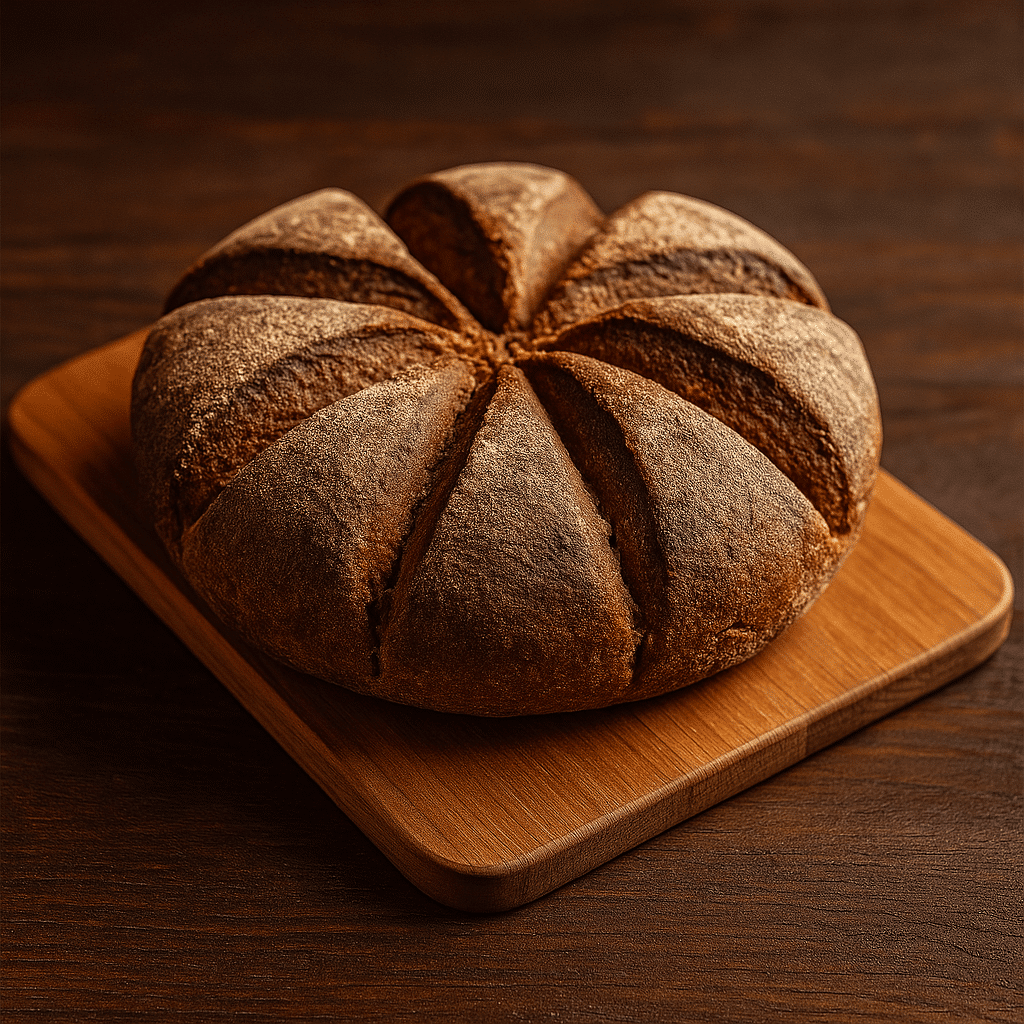
Ingredients
4 cups all-purpose flour
1 ½ cups warm water
2 teaspoons salt
2 teaspoons yeast
Optional: 1 tablespoon olive oil
Method
Combine flour, salt, and yeast. Add water to form dough. Rest for 10 minutes.
Knead until smooth, about 8 minutes by hand or 5 in a mixer. Add oil if desired.
Shape a ball and let rise until doubled.
Preheat the oven to 425°F. Preheat a baking stone if you have one.
Form a round loaf and place seam side down.
For the classic look, tie loosely with kitchen twine in two loops to mark eight wedges.
Proof 30 minutes.
Bake 30–35 minutes until golden and hollow when tapped. Remove twine.
Cool briefly, slice along the natural divisions, and serve in your terracotta bread warmer.
From Then to Now
Some tools never go out of style. Clay kept bread warm in Pompeii. Likewise, it still keeps tortillas supple on comales. Similarly, it continues to puff pitas in taboons and to toast naan in tandoors. Today, the clay bread basket with warming stone carries that same wisdom to your table.
Explore our collection here. Then, bring a piece of that love story home.
Related posts
Published On: September 15, 2025
By: Christopher Godfrey
Fall is a season of layers. Designers know this, which is why they talk less about pumpkins and more about texture. You do not need to redecorate your entire home to make it feel ready for autumn. You just need the right layers. That is where fall throws and pillow covers step in. Think of them as your home’s wardrobe change: fresh, effortless, and packed with story.
Published On: August 12, 2025
By: Christopher Godfrey
Discover handmade woven baskets that turn storage into style. Explore artisan-crafted designs in natural fibers like abaca and rattan.
Published On: July 10, 2025
By: Christopher Godfrey
A swing brings easy comfort to your porch, patio, or garden. Its gentle movement creates a welcoming space to relax outdoors. Designed for everyday use, it makes outdoor living feel effortless.
